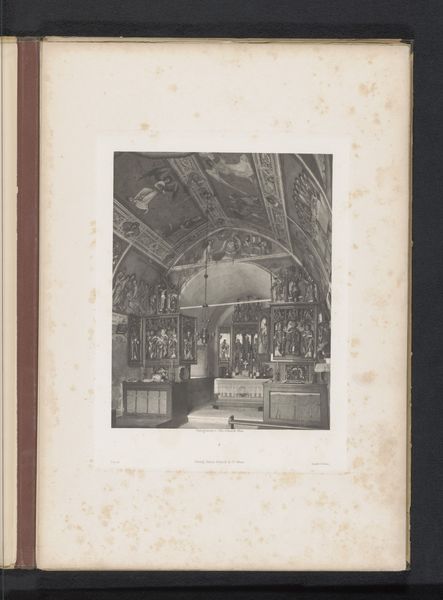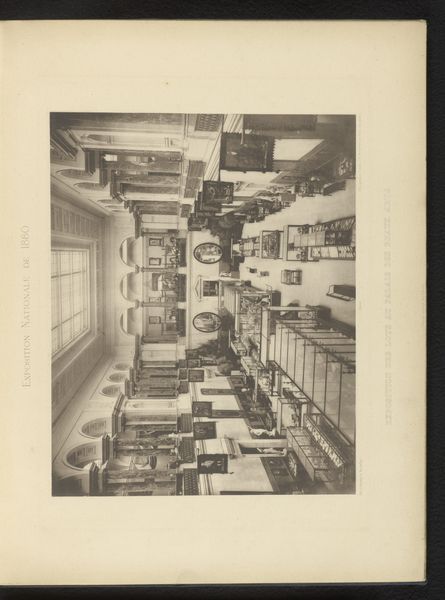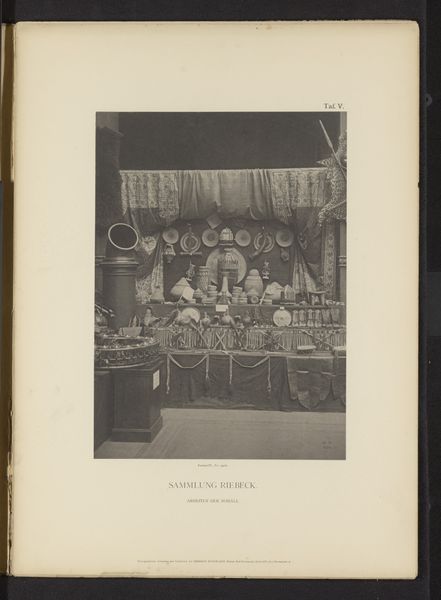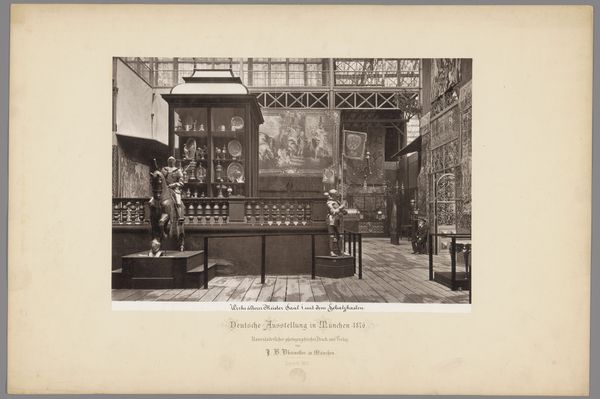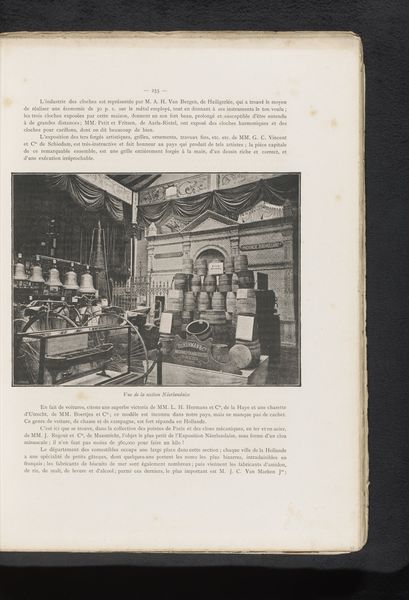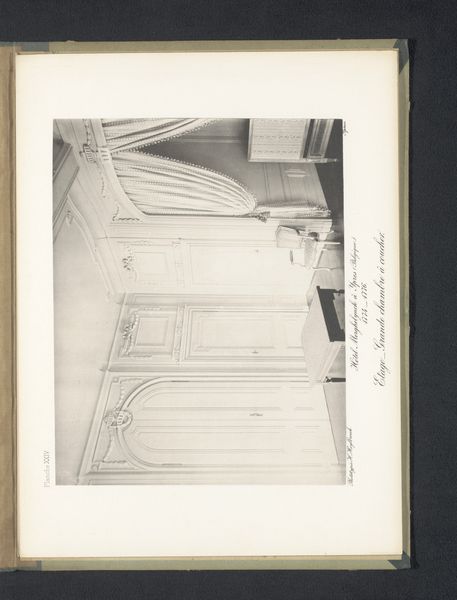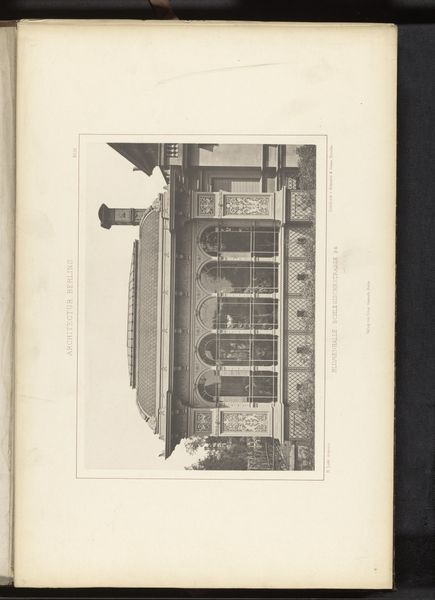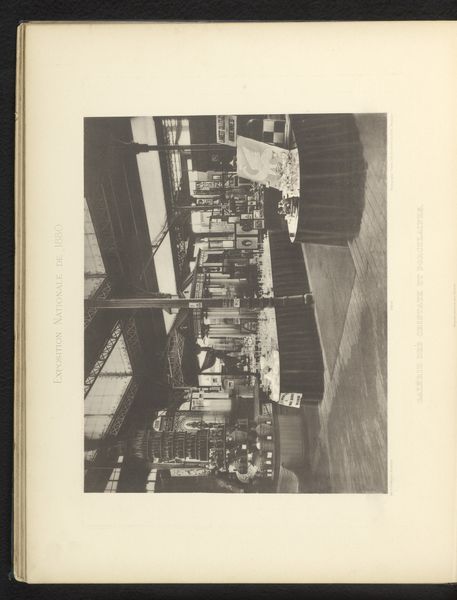
Grafmonumenten van Isabella I en Ferdinand II de Katholieke, Johanna de Waanzinnige en Filips de Schone in de kathedraal van Granada before 1886
0:00
0:00
tempera, print, photography, gelatin-silver-print, marble
#
tempera
#
ink paper printed
# print
#
landscape
#
photography
#
carved into stone
#
ancient-mediterranean
#
gelatin-silver-print
#
marble
Dimensions: height 258 mm, width 200 mm
Copyright: Rijks Museum: Open Domain
Editor: Here we have an image of the "Grafmonumenten van Isabella I en Ferdinand II de Katholieke, Johanna de Waanzinnige en Filips de Schone in de kathedraal van Granada," or, the tomb monuments of Isabella I, Ferdinand II, Joanna the Mad, and Philip the Handsome in the Granada Cathedral, taken sometime before 1886. It's a gelatin silver print capturing a grandiose, almost intimidating space. The monuments themselves are obscured behind ornate grilles. What do you see here? Curator: The grilles are really what stands out, aren't they? Think of what they *mean*, all those bars acting almost as a cage around the deceased royalty. Consider how powerful they were in life, their symbols of authority and wealth – but here, they’re visually ‘imprisoned’, aren’t they? What do you make of that symbolism? It’s fascinating, isn't it, the ways we use symbols like the bars to suggest themes like control or restriction – but also reverence and protection? Editor: I suppose it speaks to mortality, that even in death, there's still a desire, or perhaps a need, to control their image and legacy. It’s just, these grilles seem almost desperate in that attempt, and kind of sad. Curator: Exactly! It's a visible tension between power and powerlessness, framed with symbols, to tell us what? Consider the grilles as a cultural memory or representation; it tells a story and reinforces social structures even in their afterlife. The symbolism has weight, don't you think? Editor: Definitely, it puts a spotlight on the relationship between how we view our leaders, their place in the world, and even how that persists into the afterlife, it's really striking when viewed in such stark terms. Curator: Precisely. What initially struck me as simply ornate architecture now appears as loaded with significance, altering my perception and offering a window into a fascinating cultural moment. Editor: Yes, thinking about the lasting legacy and intent really does give it all a different context.
Comments
No comments
Be the first to comment and join the conversation on the ultimate creative platform.

